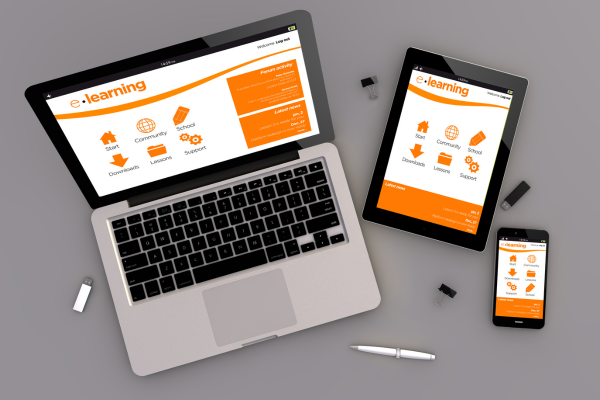How to Set Your Rates as a Freelance Designer
Setting your rates as a freelance designer can be one of the most challenging aspects of starting and maintaining a freelance career. Pricing your services too low can lead to burnout and undervaluation, while pricing too high can drive potential clients away. Here’s a comprehensive guide to help you determine and set your rates effectively.
1. Understand Your Value
Before setting your rates, it’s crucial to understand the value you bring to your clients. Your skills, experience, and the quality of your work are significant factors that determine your worth.
Tips:
- Evaluate your portfolio to identify your strengths and unique selling points.
- Consider your level of expertise and the demand for your skills in the market.
- Take note of any awards, recognitions, or notable clients you have worked with.
2. Research the Market
Understanding the market rates for freelance design services is essential. This helps you to set competitive and realistic rates.
Tips:
- Look at what other freelancers with similar experience and skills are charging.
- Check out freelance platforms like Upwork, Freelancer, and Behance for rate comparisons.
- Join industry forums and groups to gather insights from other designers.
3. Calculate Your Costs
To ensure your rates are sustainable, you need to calculate your costs. This includes both your business expenses and your personal living expenses.
Tips:
- List all your business expenses such as software subscriptions, hardware, office supplies, and marketing costs.
- Calculate your personal expenses including rent, utilities, groceries, and other living costs.
- Don’t forget to factor in taxes and savings.
4. Decide on a Pricing Model
There are different pricing models you can use as a freelance designer. Each has its advantages and disadvantages.
Hourly Rate:
- Pros: Easy to calculate, clients understand it well.
- Cons: Limits your earning potential, may not reflect the value of the final product.
Project-Based Rate:
- Pros: Reflects the value of the completed project, potential for higher earnings.
- Cons: Can be challenging to estimate accurately, scope creep can be an issue.
Retainer-Based Rate:
- Pros: Provides consistent income, builds long-term client relationships.
- Cons: Requires reliable and ongoing client work, can be restrictive.
5. Calculate Your Hourly Rate
Even if you choose a project-based or retainer model, knowing your hourly rate is useful for estimating project costs.
Tips:
- Use the formula: Hourly Rate=(Annual Salary + Annual Expenses + Profit Margin)Billable Hours per Year\text{Hourly Rate} = \frac{\text{(Annual Salary + Annual Expenses + Profit Margin)}}{\text{Billable Hours per Year}}Hourly Rate=Billable Hours per Year(Annual Salary + Annual Expenses + Profit Margin)
- Determine your desired annual salary and add your annual business expenses and a profit margin.
- Estimate the number of billable hours you can realistically work in a year.
6. Set Project-Based Rates
For project-based pricing, you need to estimate the total hours required and multiply by your hourly rate.
Tips:
- Break down the project into tasks and estimate the time for each task.
- Add a buffer for revisions and unexpected delays.
- Consider the value and complexity of the project when setting the price.
7. Consider Your Clients’ Budget
Understanding your clients’ budget constraints can help you set rates that are both competitive and acceptable to them.
Tips:
- Discuss budget upfront during initial client meetings.
- Be prepared to negotiate and offer different pricing packages to suit various budgets.
- Educate clients on the value and benefits of investing in quality design.
8. Adjust for Different Factors
Your rates should be flexible to accommodate different factors such as project complexity, urgency, and client type.
Tips:
- Charge higher rates for rush jobs or highly complex projects.
- Offer discounts for non-profits or long-term clients.
- Regularly review and adjust your rates based on feedback and market changes.
9. Communicate Your Rates Clearly
Clear communication about your rates helps to avoid misunderstandings and ensures clients know what to expect.
Tips:
- Include your rates on your website or in your portfolio.
- Provide detailed quotes that break down costs for each part of the project.
- Be upfront about any additional costs or potential changes in the scope of work.
10. Evaluate and Adjust Regularly
Regularly evaluating your rates ensures they remain competitive and reflective of your growing skills and experience.
Tips:
- Review your rates annually or after completing major projects.
- Seek feedback from clients on your pricing.
- Adjust your rates to reflect any new skills, certifications, or significant experience gained.
Conclusion
Setting your rates as a freelance designer is a crucial step in building a successful and sustainable career. By understanding your value, researching the market, calculating your costs, and choosing the right pricing model, you can set competitive rates that reflect your expertise and attract the right clients. Remember, your rates should evolve with your experience and the market, so regular evaluation and adjustment are essential. With a clear strategy in place, you can confidently present your rates and ensure you are fairly compensated for your work.





